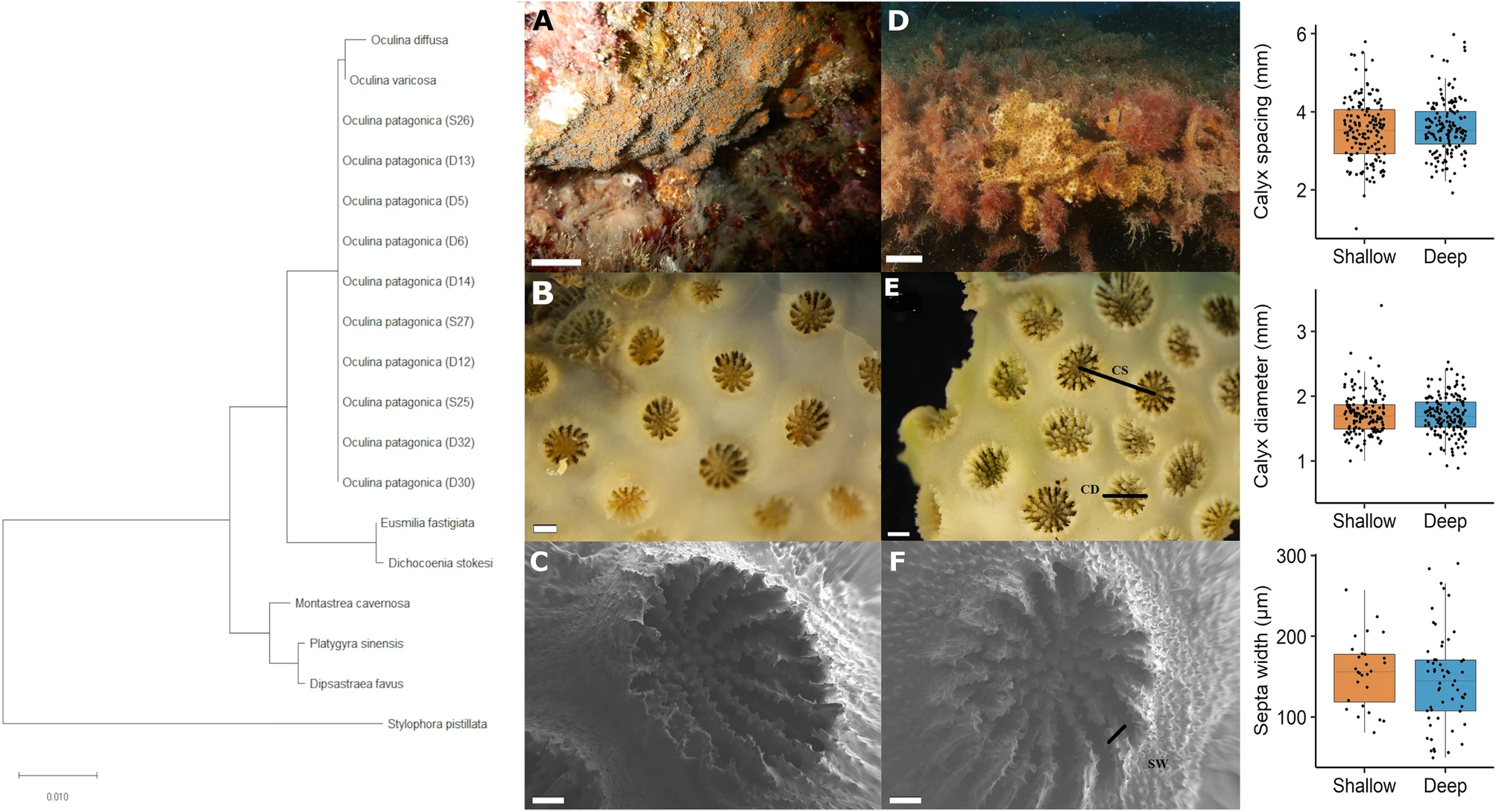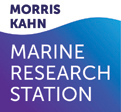
In the image: Verification of species identity of all colonies collected as Oculina patagonica, using both genomic (CO1 gene sequencing) and morphological features. The evolutionary history was inferred using the Neighbour-Joining method and evolutionary distances were computed using the Maximum Composite Likelihood method (units: number of base substitutions per site) using the software MEGA X. Images (A–C) are of shallow colonies and (D–F) deep colonies. CS Calyx spacing, CD Calyx diameter, SW Septa width. Scales bar lengths are 1 cm (A, D, in situ), 1 mm (B, E, binocular microscopy), and 100 μM (C, F, scanning electron microscopy, mag. × 60). Graphs in the right panel display measured skeletal features on O. patagonica from 30 m (‘Deep’, blue boxes) and 2 m (‘Shallow’, red boxes) water depth. Horizontal black lines within boxes are median values and box limits represent 1st and 3rd quartiles. Whiskers represent 1.5 times the interquartile range. Round black points are individual sample data. No statistically significant differences were present between deep and shallow corals (Student’s t-test, p ≥ 0.05).
The tempered coral Oculina patagonica that live in the Mediterranean Sea uses photosynthesis and predation as its food sources. This coral can be found in the western Mediterranean as well in the eastern Mediterranean, but, until recently it was found only in the shallow water of less than 10m. The water temperatures in the Mediterranean increase from west to east while the temperatures in the west Mediterranean range between 14-240c in the eastern Mediterranean the temperature range between 16-310c. Global warming increased the water temperature in the eastern Mediterranean by 30c in the past three decades. That increase brought the coral Oculina patagonica to its maximum temperature tolerance. Recently we discovered that this coral can also be found in the eastern Mediterranean at 30m depth. The water temperature at that depth is cooler by two degrees in the summertime. We think that the coral has migrated to this depth to avoid the heat stress of the shallow water of the eastern Mediterranean Sea. We checked what adaptation it required from the coral and tested some physiological and nutritional aspects. We did not find differences between the shallow and deep coral colonies Physiology. Their nutrition is the same and they acquire the same proportion of energy from predation and photosynthesis. In contrast to the western Mediterranean where the coral lives in the shallow water exposed to the sun in the eastern Mediterranean in the shallow water, they live in a low light area. We think that this fact facilitated their movement to the deeper water where the light intensity is lower but the coral grows exposed to the light. Therefore, coral in the eastern Mediterranean shallow and deep water gets the same amount of light at both depths.



